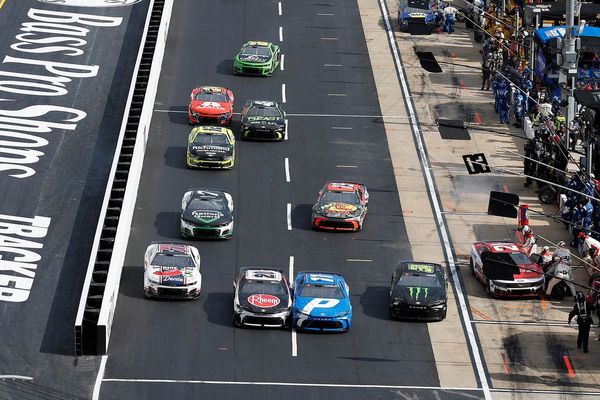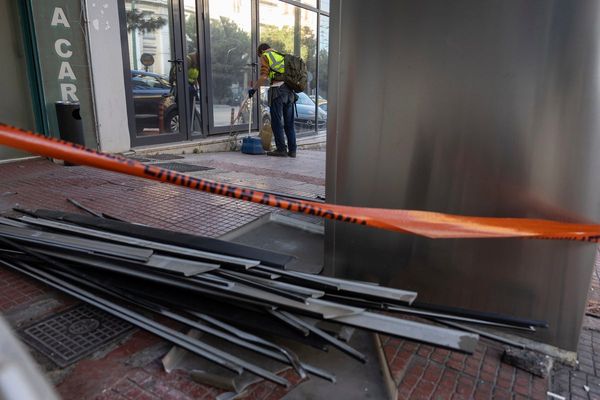
The first three races of the 2025 Formula One season are in the rearview mirror, and already a familiar pecking order has emerged. Reminiscent of the latter half of last season, McLaren is the team to beat, but Max Verstappen is giving Lando Norris and Oscar Piastri all they can handle. Through the races in Australia, China and Japan, the three aforementioned drivers and George Russell of Mercedes are the only four to finish on the podium in a Grand Prix. Still, results have varied from the rest of the grid, leaving plenty to be sorted with 21 more races to go.
With the season now swinging away from East Asia, let’s go over what we’ve learned.
McLaren’s familiar script
Since Lando Norris broke through for his debut win at the Miami Grand Prix last season, McLaren has been the team to beat in F1, full stop. Norris and Piastri bring a consistency to the quickest car on the grid that makes McLaren formidable—but not unbeatable.
Wrapping up the first race of the triple-header 👊#McLaren | #JapaneseGP 🇯🇵 pic.twitter.com/z5zOlh48o6
— McLaren (@McLarenF1) April 6, 2025
Both drivers have qualified third or better in each of the first three races, twice breaking through for wins in Australia (Norris) and China (Piastri). However, last weekend’s Japanese Grand Prix was a familiar sight of both McLaren drivers hopelessly chasing after Verstappen with little hope of catching him. Given the disparity between how McLaren’s car has performed compared to the unsteady RB21, that should be a huge cause for concern.
It hasn’t helped that questions remain unanswered about the pecking order between Norris and Piastri. There has been far less talk about 2024’s controversial, and perhaps even convoluted, “Papaya Rules”, but early indications are that McLaren intends to let its two drivers compete with one another—within reason. At Suzuka Circuit, Piastri appeared to have more pace than Norris while running in third and perhaps a better chance at reeling in Verstappen, but the team played it safe from a pit-stop strategy standpoint and never intervened to swap the two cars out on track.
Having two balanced drivers and no clear-cut No. 1 is a good problem to have, but McLaren has to be careful that it doesn’t cost itself the drivers’ championship at year’s end. Norris leads Verstappen by just a single point through three races, with Piastri 13 points off the pace. That gives McLaren an early advantage in the constructors’ standings, but for a car this quick, anything less than two trophies at the end of the season would be a letdown.
Red Bull in disarray—but Verstappen might be better than ever
If McLaren is among the teams most content with their driver pairing, then Red Bull is on the opposite end of the spectrum. Two races into the season, the team pulled the rug on Liam Lawson, who Red Bull just called up to replace Sergio Pérez at the start of 2025. Lawson, whose tenure was the shortest in team history, was sent back down to Racing Bulls, while Yuki Tsunoda was given the promotion to drive alongside Verstappen.
The move epitomized where Red Bull sits three races into the season—volatile and unsure of itself. Sure, Lawson struggled to get up to speed in Australia and China, but Verstappen also struggled (by his much higher standards) to get much out of a car that seems to be far worse than the product produced as recently as two years ago. The decision also was unpopular within Red Bull’s own ranks as Verstappen liked an Instagram post by former F1 driver Giedo van de Garde that criticized the team’s rash decision making.
Internal strife is nothing new for the 2022 and '23 constructors’ champions. Over the last two seasons, Red Bull has lost renowned car designer Adrian Newey to Aston Martin, listened to rumors of Verstappen’s future departure and used three different drivers in its second seat over a matter of four race weekends. And yet, the four-time reigning world champion is holding the team together by a thread.
Lackluster performance by the car didn’t prevent Verstappen from a stunning pole position lap in qualifying at the Japanese Grand Prix, that left Aston Martin’s Fernando Alonso calling the Dutch driver “magical,” and “the reference for all of us.” Verstappen then went on to win in Suzuka, grinding out lap after lap to hold off both McLaren drivers. Questions immediately emerged if the performance was the best of his career, less than six months after similar queries came out of his comeback at last year’s Brazilian Grand Prix.
Whether or not Verstappen shouldering the load and carrying Red Bull over the finish line every week is sustainable is another question. Should Tsunoda prove himself in a seat where plenty of other drivers have failed to keep up will determine what the ceiling is for the team this year.
Another slow start for Ferrari
Ferrari fans who had visions of Lewis Hamilton racking up race wins and blasting his way to an eighth world championship right away in 2025 have quickly had to reassess expectations. That’s right folks: the Prancing Horse is already a step off the pace.
To be fair, even Hamilton needs time to adjust to a new car and a new team. But the rollercoaster of results (10th in Australia, a sprint win and Grand Prix disqualification in China and seventh in Japan) suggests an inconsistency that Ferrari has regrettably come to be defined by in recent seasons. Teammate Charles Leclerc, who’s in his seventh year with the team, has fared only slightly better. Rather than finding themselves competing with McLaren and Mercedes, the two skilled drivers are currently split in the standings by Alex Albon of Williams.

At this point last season, Ferrari was second in the constructors’ championship standings and only four points behind leader Red Bull. This year, the team is fourth with a total of 35 points—76 behind McLaren.
There’s still optimism in the Ferrari garage from team boss Fred Vasseur given that the team has made midseason strides in the past, including last season when it applied a bit of pressure on McLaren for the title. Given how far away Hamilton and Leclerc seem to be from the defending champs at this point in the season, something drastic needs to change—and quickly.
New team learning curves
Hamilton is just one of a few drivers that have struggled to get up to speed with new teams this season.
Carlos Sainz, who Hamilton replaced at Ferrari, has nabbed just a single point in China in his first year with Williams while teammate Albon has scored in all three Grand Prix outings. Lawson, of course, was demoted just two races into his Red Bull tenure. His replacement, Tsunoda, then went scoreless and wasn’t really ever close to contending for the top 10 in his Red Bull debut at his home race in Japan.
Teamwork 🤜🤛
— Atlassian Williams Racing (@WilliamsRacing) April 8, 2025
Here’s the story behind Carlos playing a crucial role in helping Alex finish P5 in Australia 🇦🇺
The flashes have been there for some. Esteban Ocon stole a fifth place in China thanks to a double disqualification for Ferrari and savvy strategy move, only to labor his way to 18th in Japan. Nico Hülkenberg kept his Sauber on track in the rainy opener in Melbourne and was rewarded with seventh place, but hasn’t finished better than 15th since.
For any of these experienced drivers who are with new teams, time spent in the car is critical. That’s in part what makes it too difficult to make sense out of who’s underperforming and which teams will rise out of the midfield to new heights this season. But it’s clear that even the most experienced drivers are still getting comfortable as the paddock makes way for Bahrain.
Rookie highs and woes
Of course, there’s another crop of new drivers on the grid in 2025. Given that race winners and experienced drivers are still getting used to new machinery, it’s no surprise that F1’s rookies are doing the same.
This class will largely want to forget Australia was its debut. Isack Hadjar didn’t finish the formation lap, while Jack Doohan and Gabriel Bortoleto couldn’t withstand the downpours of rain onto the slick track. Lawson also crashed out and has since gotten demoted. It hasn’t gotten much better for Doohan or Bortoleto, who are still scoreless through the first three races. But Hadjar finally got his breakthrough moment in Japan, scrapping with Hamilton and ultimately finishing in eighth.
Oliver Bearman technically made his debut last season, but is showing steady improvement in his first full-time gig. After his Haas labored around the track in the season opener, he scored points in each of the next two race weekends.
And then there’s Kimi Antonelli, who is already justifying Mercedes’s faith in him in a major way. The 18-year-old dazzled with his fourth-place finish in Australia and has kept his foot on the pedal since. In Japan, he became the youngest driver ever in F1 to lead a race, breaking the previous record set by Verstappen, as well as the youngest ever to set a fastest lap. He’s currently fifth in the standings and hasn’t been far off teammate George Russell at any point this year.
All six of F1’s newest full-time drivers will need time to show off their full potential, but if Red Bull’s move with Lawson is any indication, it’s that patience wears thin quickly in this sport. Time will tell if teams opt to stick by their developing first-years—or start to explore other options for next season.
This article was originally published on www.si.com as What We’ve Learned Three Races Into the 2025 F1 Season.







